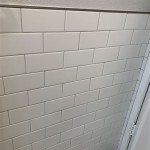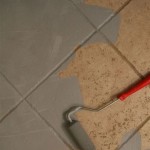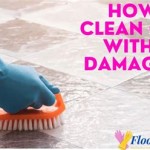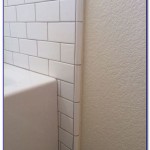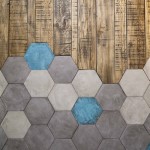Do You Need Cement Board For Shower Wall Tile?
The question of whether cement board is a necessary substrate for shower wall tile installations is a subject of frequent debate among contractors and homeowners. While various alternatives exist, understanding the specific properties of cement board and the demands of a shower environment is crucial for making an informed decision. The long-term performance and structural integrity of a tiled shower wall are directly affected by the selection of an appropriate substrate.
This article will delve into the reasons why cement board is widely accepted as the standard for shower wall tile, explore its benefits and drawbacks, and discuss the alternatives that may be considered in certain situations. Ultimately, the goal is to provide a comprehensive understanding of the factors that influence substrate selection for shower wall tiling, enabling readers to make choices that prioritize durability and prevent costly water damage.
The Importance of Moisture Resistance in Shower Walls
The primary function of a shower wall is to contain water and prevent it from penetrating into the wall cavity. This is paramount because persistent moisture can lead to a range of problems, including mold growth, wood rot, and structural damage. Consequently, any material used in a shower wall must possess exceptional moisture resistance. Standard drywall, also known as gypsum board, is particularly vulnerable to water damage. While water-resistant drywall (often referred to as "green board" or "blue board") offers improved moisture resistance compared to standard drywall, it is not generally recommended for use in shower areas that are directly exposed to water.
The inherent porosity of gypsum allows it to absorb moisture, which can eventually lead to the degradation of the board and the loosening of tile. In contrast, materials like cement board are specifically engineered to withstand constant exposure to moisture without deteriorating. Cement board's composition, primarily cement, aggregate, and reinforcing fibers, renders it virtually impervious to water, providing a stable and reliable surface for tile adhesion.
The long-term consequences of using a substrate that fails to adequately resist moisture can be significant. Mold remediation can be expensive and disruptive, while structural repairs can necessitate extensive demolition and reconstruction. Therefore, investing in a moisture-resistant substrate like cement board is a proactive measure that can save time, money, and hassle in the long run. Choosing the correct substrate is not merely a matter of aesthetics; it's about safeguarding the structural integrity of the building.
Benefits of Cement Board for Shower Wall Tile
Cement board possesses several key characteristics that make it an ideal substrate for shower wall tile. These benefits extend beyond simple moisture resistance to include durability, stability, and ease of installation.
Firstly, cement board exhibits superior durability compared to other potential substrates. Its rigid composition resists cracking, warping, and delamination, even under constant exposure to moisture and temperature fluctuations. This stability is crucial for maintaining a long-lasting tile installation. The rigid nature of cement board contributes to a more secure bond between the tile and the wall, reducing the likelihood of tiles becoming loose or dislodged over time.
Secondly, cement board provides an excellent surface for tile adhesion. Its slightly rough texture creates a mechanical bond with the thin-set mortar, ensuring that the tiles are securely anchored to the wall. This strong bond is essential for preventing tile movement and water penetration. The consistent surface of cement board also facilitates even application of thin-set mortar, leading to a more uniform and durable installation.
Thirdly, cement board is relatively easy to work with. It can be cut to size using a utility knife and scored, making it simple to create custom shapes and sizes. It can also be fastened to studs using screws, providing a secure and stable installation. While cement board is heavier than drywall, its manageable size and ease of cutting make it a feasible option for both professional contractors and experienced DIYers.
Finally, cement board is readily available at most home improvement stores and building supply retailers. This widespread availability makes it a convenient choice for most projects. Furthermore, cement board is generally cost-effective, especially when considering the long-term benefits of its durability and moisture resistance. The initial investment in cement board can prevent more costly repairs and replacements down the line.
Exploring Alternatives to Cement Board
While cement board is widely regarded as the standard for shower wall tile installations, alternative substrates are available. These alternatives may offer specific advantages in certain situations, such as ease of installation, reduced weight, or specific waterproofing capabilities. However, it is crucial to carefully consider the properties of each alternative and ensure that it meets the demands of a shower environment.
One popular alternative is waterproof drywall, which typically consists of a gypsum core encased in a fiberglass facing. This type of drywall offers enhanced moisture resistance compared to traditional drywall and is often lighter and easier to install than cement board. However, it's important to note that even waterproof drywall is not entirely impervious to water penetration. Prolonged exposure to moisture can still lead to degradation and failure, particularly at seams and penetrations.
Another alternative is specialized waterproofing membranes applied over standard drywall or plywood. These membranes, typically made of liquid-applied or sheet-applied materials, create a continuous waterproof barrier that prevents water from reaching the substrate. While these membranes can provide excellent waterproofing, their effectiveness depends heavily on proper installation. Any gaps or punctures in the membrane can compromise its integrity and allow water to penetrate.
Foam boards are also gaining popularity as shower wall substrates. These boards are lightweight, easy to cut, and inherently waterproof. They are often used in conjunction with a surface membrane, creating a highly effective moisture barrier. However, foam boards may not be as rigid as cement board, and they may require additional support to prevent flexing or movement. The type of tile being used also has an impact on the suitability of foam board. Larger format tiles, for example, may require a more rigid substrate for adequate support.
Regardless of the alternative chosen, it is crucial to carefully follow the manufacturer's instructions for installation. Proper preparation of the substrate, including sealing seams and penetrations, is essential for ensuring a waterproof and durable shower wall. Furthermore, it is advisable to consult with a qualified contractor or building professional to determine the best substrate for a specific project.
The choice between cement board and alternative substrates should be based on a comprehensive assessment of the project requirements, including the level of water exposure, the type of tile being used, and the desired level of durability. While alternatives may offer certain advantages, cement board remains a reliable and time-tested option for shower wall tile installations.
The use of an anti-fracture and/or waterproof membrane with each of these can increase the life and durability of the installation as well. These are normally applied as a liquid and allowed to dry before installation of the tile. The application of such a membrane is not a replacement for cement board.
In summary, while alternatives exist, cement board remains a solid and dependable choice for ensuring the longevity and integrity of tiled shower walls. Its moisture resistance, durability, and ease of installation make it a preferred option for both professionals and homeowners seeking a reliable substrate that can withstand the rigors of a shower environment. Proper installation, regardless of the selected material, is paramount for preventing water damage and maintaining a beautiful and functional shower space.

Tile Backerboard Material Options Fine Homebuilding

Installing Cement Board In The Bathroom Angie S Roost
Drywall And Cement Board For The Downstairs Bathroom Blog Homeandawaywithlisa
Should I Use Green Board Or Cement For Behind My Shower Tiles In The Bathroom Quora
Setting The First Wall Tile In Bathroom Blog Homeandawaywithlisa

Installing Cement Board In The Bathroom Angie S Roost

Tile Backer Board Breakdown Which One Is Best For Showers Diytileguy
Should I Use Green Board Or Cement For Behind My Shower Tiles In The Bathroom Quora

How To Install Cement Board For Tile Bower Power

How To Install Cement Board For Tile Projects Diy Family Handyman
Related Posts


